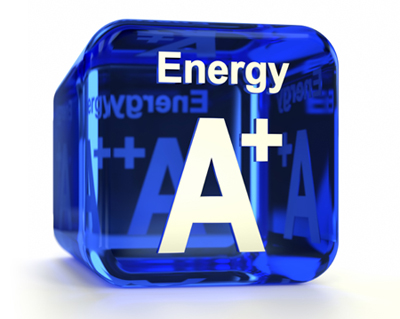
Photo Credit: iStockphoto.com
With global climate change and rising energy demand worldwide, the concept of energy efficiency is viewed by many experts as one immediate way to address both these challenges. More efficient use of energy can help significantly reduce energy consumption, save money and further decrease greenhouse gas emissions. Efficiency is a simple concept which basically means “using less energy to provide the same service”. By using more efficient equipment or making changes in energy consumption patterns or practices, the same output can be obtained with fewer energy inputs. Although, the term “efficiency” is typically associated with how energy is consumed by end users, the same concept can also be applied to how energy is produced. Indeed, the power sector can play a leading role in promoting energy efficiency and as a driver for technological innovation and investment in clean energy systems.
Power generation accounts for more than one-third of total global fossil fuel use and around 40% of global energy-related CO2 emissions. Improving the efficiency with which electricity is produced is therefore one of the most important ways to help mitigate climate change and also reduce the world’s dependence on fossil fuels. The potential for efficiency gains in power generation can generally be achieved by using high efficiency technologies for new power plants, and through maintaining or restoring the efficiency of existing plants. Energy efficiency in the power sector refers to the process of conversion of the heat energy in a fuel source (typically gas, oil or coal) into mechanical energy in a generator and ultimately into electrical energy. However, some technologies like solar, wind or hydro power extract energy from renewable sources, while other devices, such as fuel cells, use chemical reactions to generate electricity. In each of these, however, the energy output is lower than the energy available at the beginning of the process.
The efficiency of power generation varies with different technology types. The question of how to raise the overall efficiency of power plants has been present in the power sector for many years since the new technology was devised to combine existing gas and steam technologies in one system. A combined cycle power plant uses a gas turbine to create electricity and then utilises the resulting waste heat to produce steam, which in turn operates a steam turbine and generates additional power. The gas turbine delivers about two-thirds of the produced power and the remaining one-third comes from the steam engine. The combination of two processes allows optimimal heat utilisation from fuel combustion, thereby increasing the overall efficiency to 60%. In Singapore, most of the electricity comes from combined cycle power plants running on natural gas.
Obviously, a power plant working at 60% efficiency still leaves behind a vast amount of energy in the generation process. Moreover in practice, due to various factors, installations rarely deliver their maximal efficiency. As power plants age, their efficiency tends to decline due to wear, component failures, deferred maintenance, etc. Starts and stops, changes in load, and partial load operations also reduce plant efficiency. In severe cases, these impacts can increase the fuel consumption of a power plant by as much as 20%. Keeping efficiencies in line with the original design means regular equipment overhauls, systems of combustion control and well-tuned operation and maintenance practices. It is important to keep in mind that for power companies, decreasing efficiencies mean higher power generation costs as well as increased consumption of input fuel and higher greenhouse gas emissions. Maintaining highly efficient power generation has a broad spectrum of economic and ecological benefits. For example, choosing a combined cycle power plant over a conventional gas or steam turbine for the generation process will usually require less fuel but provide the same output of electricity. This helps utility companies reduce the costs of generation and provide power to consumers at cheaper prices, which is especially relevant in countries like Singapore where the electricity market is deregulated to promote intersectoral competition.
Greater energy efficiency also helps the power sector lower its greenhouse gas emissions and contribute to governments’ long-term goals for climate change mitigation. Typically, the primary greenhouse gas that is released from human activities is carbon dioxide coming from power plants. The burning fossil of fuels also produces various air pollutants which have negative impacts on human health and the overall quality of life. While there are technologies available to capture greenhouse gases and pollutants from power plants, the fact remains that the easiest ton to capture is the one that is not emitted at all. By having the power sector use clean fuels such as natural gas and renewables, and by promoting energy efficiency, it is possible to make emission reductions achievable and economically beneficial.
The adoption of energy-efficient technologies in the power sector can bring both individual and social rewards, in the form of economic, environmental and security benefits arising from reduced fuel consumption. The technological solutions available today for improving energy efficiency are much more diverse and more widely supported than at any time before. Still, even though such improvements may seem good on paper, they are not always adopted in the marketplace. Opportunities to restore design energy efficiency in existing plants are often not implemented due to a scarcity of capital, missing performance standards and lack of knowledge about how to carry these improvements out. For new plants, lack of capital and experience leads companies to build less efficient conventional plants, which are considered easier to operate and maintain. Another reason can be the presence of subsidies which make for inappropriately low fuel prices and hinder fuel savings from becoming a priority and driver for investment in both new and existing plants. This energy-efficiency gap can be bridged with appropriate government policies to promote efficient power generation and the introduction of economic incentives to stimulate invention, adoption and use of energy-efficient practices.
BY : Anton Finenko, ESI Energy Analysts